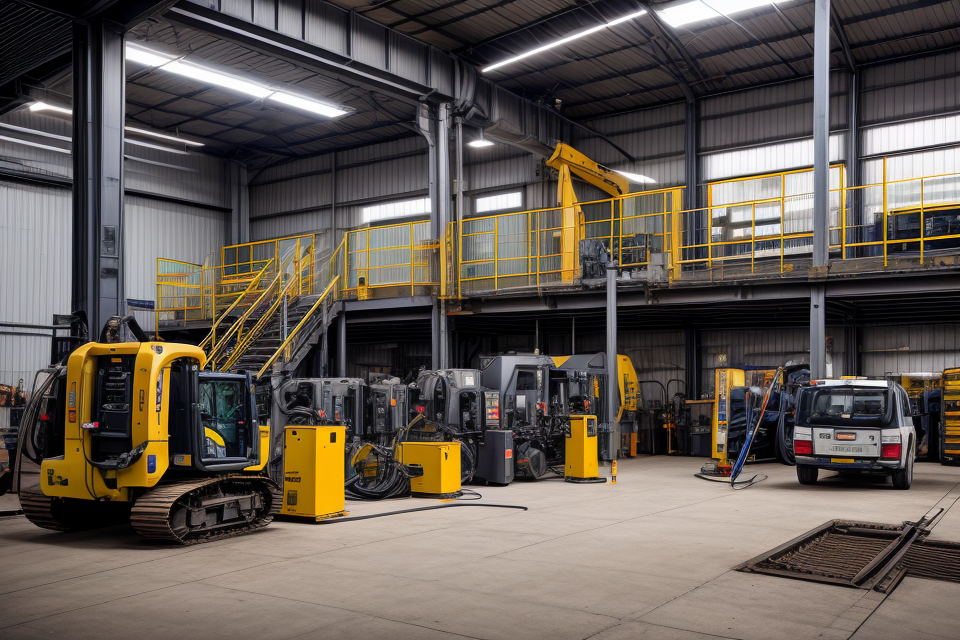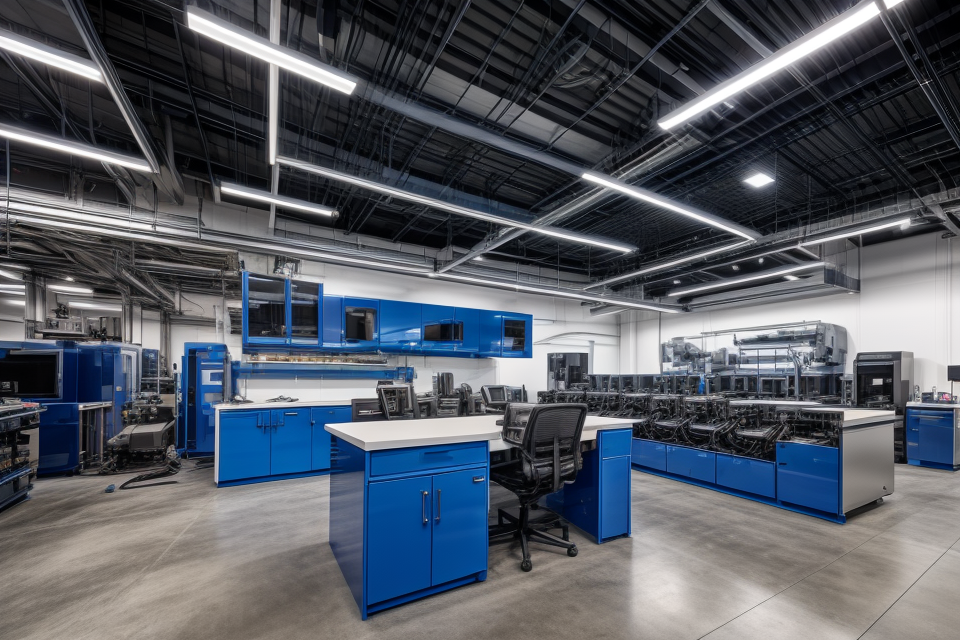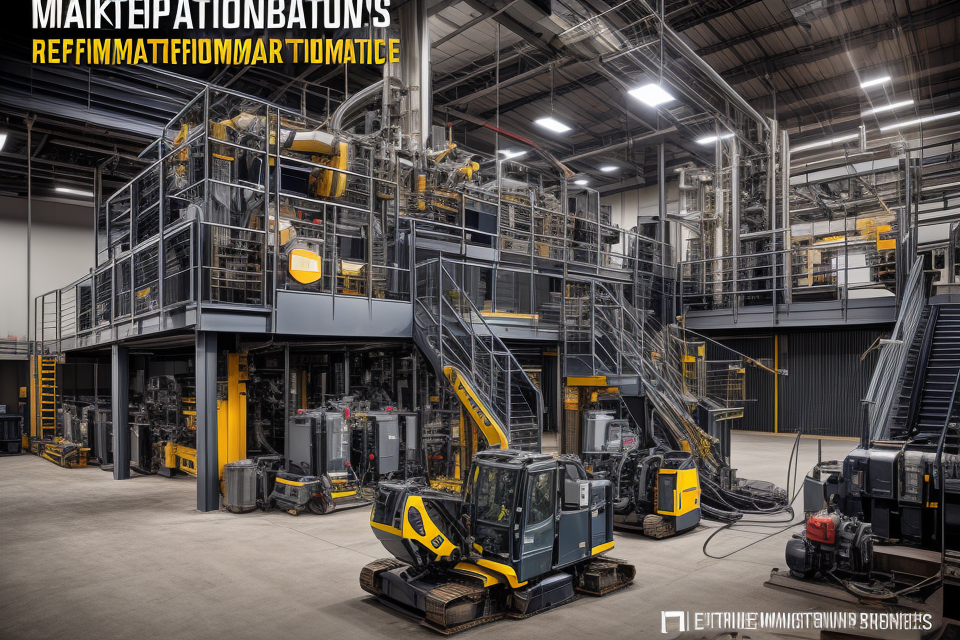In any industry, equipment is a crucial aspect of day-to-day operations. Whether it’s heavy machinery, electronic devices, or vehicles, regular maintenance is essential to ensure optimal performance and prolong the lifespan of the equipment. This guide will provide a comprehensive overview of the general maintenance that equipment requires, covering everything from regular cleaning and inspection to more extensive repairs and replacements. By following these guidelines, you can ensure that your equipment is always in top condition and ready to perform when you need it most. So, let’s dive in and explore the essential aspects of equipment maintenance.
Understanding Equipment Maintenance
The Importance of Regular Maintenance
- Preventing equipment breakdowns
- Reducing repair costs
- Maximizing equipment lifespan
Preventing Equipment Breakdowns
Regular maintenance helps to prevent equipment breakdowns, which can result in costly downtime and lost productivity. By regularly inspecting and maintaining equipment, businesses can identify potential issues before they become serious problems, reducing the risk of unexpected failures.
Reducing Repair Costs
Regular maintenance can also help to reduce repair costs. When equipment is not properly maintained, small problems can escalate into larger, more expensive repairs. By regularly inspecting and maintaining equipment, businesses can catch minor issues before they become major problems, saving money on repairs and reducing the frequency of equipment failures.
Maximizing Equipment Lifespan
Regular maintenance can also help to maximize equipment lifespan. When equipment is not properly maintained, it can wear out faster, leading to more frequent replacements and higher costs. By regularly inspecting and maintaining equipment, businesses can extend its lifespan, reducing the need for frequent replacements and saving money in the long run.
Types of Maintenance
When it comes to maintaining equipment, there are three main types of maintenance that must be considered: scheduled maintenance, corrective maintenance, and preventive maintenance.
- Scheduled Maintenance is the planned maintenance that is carried out on a regular basis, such as oil changes, filter replacements, and other routine tasks. This type of maintenance is important to ensure that equipment is operating at peak performance and to prevent unexpected breakdowns.
- Corrective Maintenance is the unplanned maintenance that is performed when equipment fails or breaks down. This type of maintenance is typically more expensive and time-consuming than scheduled maintenance, as it involves identifying and fixing the problem after it has occurred.
- Preventive Maintenance is the proactive maintenance that is performed to prevent equipment failures or breakdowns from occurring in the first place. This type of maintenance includes tasks such as cleaning, lubricating, and inspecting equipment on a regular basis. Preventive maintenance is crucial to ensure that equipment is operating at peak performance and to extend its lifespan.
It is important to note that all three types of maintenance are necessary for effective equipment maintenance. Scheduled maintenance helps to prevent unexpected breakdowns, while corrective maintenance is necessary to fix problems when they do occur. Preventive maintenance is crucial to prevent problems from occurring in the first place, and to extend the lifespan of equipment.
Equipment Maintenance Checklist
Daily, Weekly, and Monthly Tasks
Daily tasks are essential for maintaining equipment in good working condition. These tasks include inspection and cleaning, which can help prevent equipment failure and prolong the life of the equipment.
Weekly tasks involve lubrication and adjustments. Regular lubrication can help reduce friction and wear on moving parts, while adjustments can help ensure that equipment is running at optimal levels.
Monthly tasks involve detailed inspections and maintenance records. Detailed inspections can help identify any issues that may have developed over time, while maintenance records can help track the history of the equipment and ensure that all maintenance tasks are up to date.
By following these daily, weekly, and monthly tasks, businesses can ensure that their equipment is well-maintained and running smoothly, which can help prevent downtime and increase productivity.
Seasonal Tasks
Spring: Cleaning and Preparation for Heavy Use
- Clean equipment to remove dirt, dust, and debris that may have accumulated over the winter months.
- Inspect equipment for any damage or wear and tear that may have occurred during the winter.
- Replace any damaged or worn-out parts as necessary.
- Check for any leaks or fluid spills and repair them immediately.
- Check the oil level and change it if necessary.
- Check the air pressure of tires and replace if needed.
Summer: Lubrication and Cooling System Checks
- Check the lubrication system and add oil if necessary.
- Check the cooling system and add coolant if necessary.
- Check the hoses and belts for any signs of wear and tear.
- Check the battery and replace if necessary.
- Check the air conditioning system and recharge the refrigerant if necessary.
Fall: Preparation for Winter Conditions
- Check the fuel system and make sure the fuel filter is clean.
- Check the brakes and replace the brake pads if necessary.
- Check the wipers and replace them if necessary.
- Check the lights and replace any burnt-out bulbs.
- Check the windshield wipers and replace them if necessary.
Winter: Snow Removal Equipment Maintenance
- Check the snow blower and clear any debris or snow buildup.
- Check the plow blade and make sure it is free from any damage or wear and tear.
- Check the lights and make sure they are working properly.
- Check the fluid levels and top them off if necessary.
- Check the chains and make sure they are properly tightened.
Best Practices for Equipment Maintenance
Developing a Maintenance Plan
When it comes to ensuring the longevity and productivity of your equipment, developing a maintenance plan is essential. Here are some key steps to consider when creating a maintenance plan:
- Identifying critical equipment: Start by identifying the equipment that is critical to your operations. This may include machinery, vehicles, tools, and other equipment that is essential to your business.
- Prioritizing maintenance tasks: Once you have identified your critical equipment, prioritize the maintenance tasks based on the level of risk associated with each piece of equipment. For example, equipment that is used frequently or that has a high potential for failure should be given higher priority.
- Assigning maintenance responsibilities: Once you have identified the critical equipment and prioritized the maintenance tasks, assign responsibilities for each task. This may include assigning specific tasks to individual employees or contracting with third-party maintenance providers.
By following these steps, you can develop a comprehensive maintenance plan that will help you to maximize the longevity and productivity of your equipment, while minimizing downtime and repair costs.
Staying on Top of Maintenance
Regularly reviewing maintenance schedules is crucial to ensuring that equipment is properly maintained. This includes checking the equipment’s logbook to see when the next scheduled maintenance is due, as well as noting any issues that may have arisen since the last maintenance session. Additionally, it is important to track equipment performance to identify any patterns or anomalies that may indicate a need for maintenance. By implementing preventive maintenance measures, businesses can reduce the risk of equipment failure and downtime, and extend the lifespan of their equipment.
It is also important to stay on top of maintenance by establishing a routine for equipment checks. This can include performing daily, weekly, and monthly checks to ensure that equipment is running smoothly and identify any potential issues before they become serious problems. Regular cleaning and lubrication of moving parts can also help to reduce wear and tear on equipment and prevent breakdowns.
Moreover, staying on top of maintenance involves having a system in place for tracking and managing maintenance tasks. This can include using a computerized maintenance management system (CMMS) to schedule and track maintenance tasks, as well as to keep records of maintenance activities and equipment performance. By having a well-organized maintenance program in place, businesses can ensure that their equipment is properly maintained and minimize the risk of costly downtime.
Common Equipment Maintenance Issues
Common Causes of Equipment Failure
- Poor maintenance practices
- Neglecting scheduled maintenance
- Inadequate documentation of maintenance activities
- Inconsistent application of maintenance procedures
- Lack of training
- Insufficient training on equipment operation and maintenance
- Failure to train personnel on new equipment or technologies
- Inadequate documentation of training activities
- Inadequate funding
- Insufficient budget for maintenance activities
- Lack of investment in new equipment or technologies
- Failure to prioritize maintenance expenditures.
Addressing Maintenance Issues
Implementing a comprehensive maintenance program
Implementing a comprehensive maintenance program is the first step in addressing maintenance issues. This program should include regular inspections, preventative maintenance, and emergency response procedures. By creating a structured and consistent approach to maintenance, businesses can minimize downtime and extend the lifespan of their equipment.
Providing ongoing training for maintenance personnel
Providing ongoing training for maintenance personnel is crucial in addressing maintenance issues. This training should cover topics such as equipment operation, troubleshooting, and safety procedures. By ensuring that maintenance personnel are well-trained and knowledgeable, businesses can improve the efficiency and effectiveness of their maintenance program.
Prioritizing equipment upgrades and replacements
Prioritizing equipment upgrades and replacements is an important aspect of addressing maintenance issues. As equipment ages, it becomes more prone to breakdowns and may become less efficient. By prioritizing upgrades and replacements, businesses can reduce the risk of equipment failure and improve overall equipment performance. This prioritization should be based on factors such as equipment age, usage, and overall impact on the business.
Equipment Maintenance Costs and Budgeting
Understanding Maintenance Costs
When it comes to equipment maintenance, understanding the costs involved is crucial for effective budgeting and decision-making. In this section, we will delve into the three main categories of maintenance costs: labor costs, parts and supplies costs, and equipment downtime costs.
- Labor costs: Labor costs include the wages and benefits of the maintenance personnel responsible for performing routine inspections, repairs, and replacements. These costs can vary depending on the size of the equipment, the complexity of the task, and the level of expertise required. For instance, a small HVAC unit may require less labor than a large industrial boiler, which could necessitate a team of specialized technicians. It is essential to consider the time and effort required for maintenance tasks when calculating labor costs.
- Parts and supplies costs: Parts and supplies costs involve the expenses associated with replacing worn-out or damaged components, as well as the consumables needed for regular maintenance tasks. These costs can vary significantly depending on the equipment type, age, and condition. For example, a brand-new industrial printer may require more expensive parts and supplies than an older model, as it may have more advanced components that are harder to find or more expensive to replace. When budgeting for parts and supplies costs, it is important to consider the average lifespan of the equipment, the frequency of maintenance tasks, and the potential for unexpected breakdowns.
- Equipment downtime costs: Equipment downtime costs refer to the financial impact of lost productivity and revenue when equipment is out of service due to maintenance or repairs. These costs can be substantial, especially for businesses that rely heavily on their equipment to operate. For instance, a manufacturing plant that experiences unplanned downtime due to equipment failure may face significant losses in output and revenue. To calculate equipment downtime costs, it is essential to consider the cost of lost production, lost customers, and the cost of temporary replacement equipment or alternative workarounds.
By understanding the various costs associated with equipment maintenance, businesses can better allocate their resources and make informed decisions about when to invest in preventive maintenance, when to defer repairs, and when to replace equipment entirely.
Developing a Maintenance Budget
Conducting an Equipment Inventory
The first step in developing a maintenance budget is to conduct an equipment inventory. This involves creating a comprehensive list of all the equipment that needs to be maintained, including the make, model, serial number, age, and current condition of each piece of equipment. This inventory will serve as a reference point for estimating maintenance costs and prioritizing repairs and replacements.
Estimating Maintenance Costs
Once the equipment inventory has been completed, the next step is to estimate the annual maintenance costs for each piece of equipment. This should include both routine maintenance, such as cleaning and lubrication, and unscheduled maintenance, such as repairs and replacements. To estimate maintenance costs, it is important to consider factors such as the age and condition of the equipment, the frequency of use, and the cost of spare parts and labor.
Prioritizing Equipment Repairs and Replacements
With a comprehensive equipment inventory and estimated maintenance costs in hand, the next step is to prioritize repairs and replacements based on their potential impact on the equipment’s performance and the overall production process. For example, critical equipment that is essential to the production process should be given priority over less critical equipment. Additionally, repairs and replacements that are expected to have a significant impact on performance should be prioritized over those with a smaller impact.
By following these steps, businesses can develop a maintenance budget that accurately reflects the true cost of maintaining their equipment and helps to ensure that they have the resources they need to keep their equipment running smoothly.
FAQs
1. What is equipment maintenance?
Equipment maintenance refers to the practice of regularly inspecting, cleaning, and repairing equipment to ensure it remains in good working condition. It is essential for businesses that rely on equipment to operate smoothly and efficiently.
2. Why is equipment maintenance important?
Regular equipment maintenance is important because it helps prevent breakdowns, reduces repair costs, and extends the lifespan of the equipment. By keeping equipment well-maintained, businesses can avoid costly downtime and ensure their operations run smoothly.
3. What are the different types of equipment maintenance?
There are several types of equipment maintenance, including preventive maintenance, predictive maintenance, and corrective maintenance. Preventive maintenance involves regularly scheduled inspections and repairs to prevent equipment failure. Predictive maintenance uses data analysis and machine learning to predict when equipment is likely to fail and schedule repairs accordingly. Corrective maintenance is performed after equipment has failed.
4. How often should equipment be maintained?
The frequency of equipment maintenance depends on the type of equipment and its usage. Preventive maintenance should be performed regularly, while predictive and corrective maintenance may be needed less frequently. It is important to follow the manufacturer’s recommendations for maintenance schedules.
5. Who should perform equipment maintenance?
Equipment maintenance can be performed by in-house maintenance teams or by external service providers. It is important to have qualified technicians who are trained to work on the specific type of equipment. In some cases, manufacturers may offer maintenance services, which can be a good option for businesses that want to ensure their equipment is maintained to the highest standards.
6. What are the benefits of regular equipment maintenance?
Regular equipment maintenance can help businesses reduce downtime, improve efficiency, and extend the lifespan of their equipment. It can also help identify potential problems before they become serious, which can prevent costly repairs and replacement. Additionally, well-maintained equipment is safer to operate and can help reduce the risk of accidents.
7. How can I create an equipment maintenance plan?
Creating an equipment maintenance plan involves identifying the type of equipment, its usage, and the manufacturer’s recommendations for maintenance schedules. It is important to consider the cost of maintenance, the impact of downtime, and the availability of service providers. Businesses can also use data analysis and machine learning to optimize their maintenance schedules and identify potential problems before they become serious.










